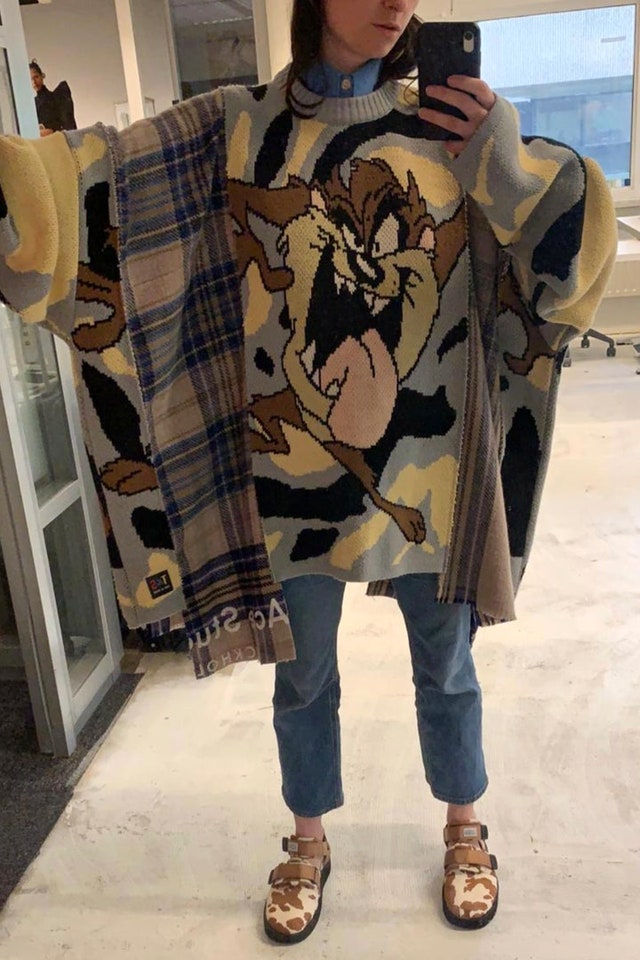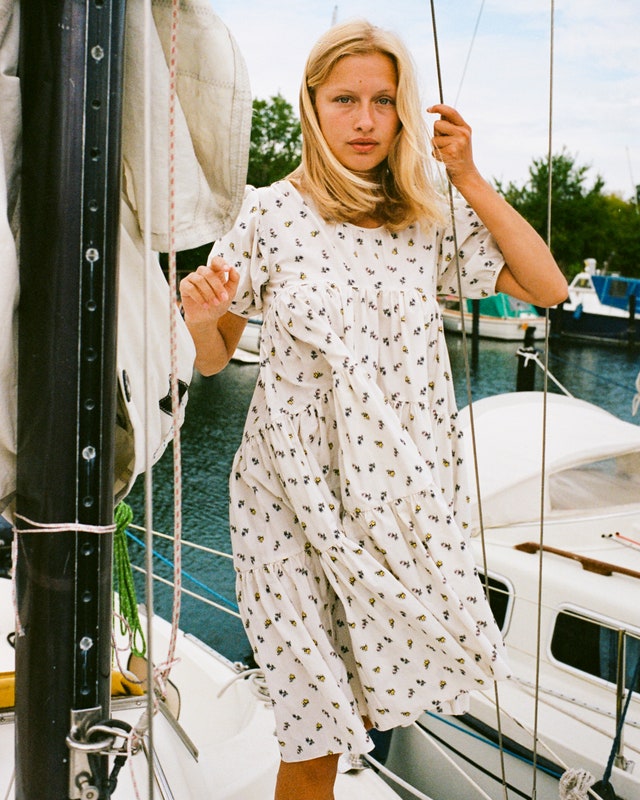Let’s check Vogue’s arguments why recycling is an essential step for the fashion industry and the planet.
Upcycling – the recycling of old things – can rightfully be called the primary trend of the spring-summer 2021 season. Brands such as Balenciaga (with their shaggy lace-up fur coat), Marni (remember outerwear created from pieces of “old” clothes and fabrics using the patchwork technique), and Coach (reworked bags straight from the 1970s), were not afraid to experiment with reusing materials. In October, Miu Miu announced that they are launching the new Upcycled collection, an exclusive capsule of 80 unique dresses cut from vintage garments that have been painstakingly selected from vintage stores and flea markets worldwide.

Some young designers – Ahluwalia, Bethany Williams, Bode – became famous precisely because they found the use of ready-made fabrics. But the fact that the most prominent luxury brands are now adopting this practice is a massive step for the industry. “We first started talking about fabrics and garments that went unclaimed in 2017,” Gabriela Hirst told Vogue on Zoom, who has 60% of her S / S 2021 collection upcycling. – And then it seemed like bad words as if in the vocabulary of the luxury segment such should not be.

Balenciaga Spring / Summer 2021
© Courtesy Balenciaga
However, this year, the restrictions stemming from the pandemic led many designers to abandon the usual pattern of ordering new fabrics and turned to materials that were at hand. So, recently, the JW Anderson brand launched a capsule collection Made in Britain: it consists of six items sewn from the remnants of fabrics from the collections of previous seasons. “The idea of Made in Britain came to me during the quarantine. I wanted to sew from what we already have and work with local suppliers, – explained Jonathan Anderson, creative director of the brand. “I think recycling will only become more popular in the future.”
The devastating effect of overproduction
The pandemic has left an alarming 140-160 billion euros in unused and unsold material after working on the Spring / Summer 2020 collections, at least double the usual amount. In the past, unsold luxury goods were burned or thrown away to keep their value up, but over time, such shocking practices have been banned, at least in France. Now buyers are more aware of the problem of garbage and waste. This is why the industry needs to develop new, sustainable practices for handling unsold items and materials left over from production.

Duran Lantink
Designer Duran Lantinck alters old collections from Gucci, Prada, and Off-White and creates new luxury garments from them. Since the beginning of the pandemic, more and more brands have begun to offer him cooperation. “There is a lot of interest in my work,” says the Dutch designer by phone from Amsterdam. “Now it’s even a little scary: it’s important for retail brands to figure out what to do with production leftovers and unsold items.”
Of course, the designers who have always stood for the environment – the same Gabriela Hirst – took the problem of excess production into their own hands. Hirst recently made a Retro Fit collection from unsold items for London’s Selfridges department store. It turned out a lot of cashmere products, repainted dress-shirts and tote bags, made using patchwork. “When the pandemic hit stores, we started thinking, ‘How can we create something new from the ready-made things and materials that we already have?’ – said Hirst.
New ways of working
Integrating upcycling into the product development cycle is not easy. When working on the spring-summer 2021 collection, Marine Serre had to radically revise all the deadlines because it takes much longer to complete orders from recycled materials. “Last year it became clear that the production of garments from recyclable materials takes too long, so it is not possible to have time to deliver them to all stores by the season. To solve the problem, we changed the operating mode. For example, we took on the spring-summer 2021 collection back in October 2019, so that we would certainly be in time for everything and not finish it at the last moment at the expense of quality, ”the French designer told Vogue.
“Sewing from recycled materials is not a quick process: we started working on this collection last fall,” – Marin Serre on the spring-summer 2021 season.
Working with deadstock turns the traditional fashion chain upside down. This is mainly for comes down because designers have to stop at a particular set of fabrics very early, and it is difficult to determine how popular the collection will be and whether it will be sold out. “We buy large quantities of fabric in advance – this is a big risk for a designer,” explains Gabriela Hirst. “But I love it: it leaves me less waste this way.”

Cecilie Bahnsen Encore 3
© Courtesy Cecilie Bahnsen
However, the benefits of upcycling are clear. For example, exclusivity. “When there is no more fabric left on a roll, we take a new one, but a completely different one,” says Danish designer Cecile Bansen, who developed the Encore collection from leftover materials for her brand this year. “The final thing becomes unique and limited, and therefore valuable.”
Once upon a time, a lack of uniformity would have been a problem for retailers (products would not look the way they look on the internet). But now, consumers appreciate the fact that the thing that got to them is unique. “The very fact that things are no longer identical to each other is attractive to customers. So they become almost collectible, you want to invest in them, – explains Natalie Kingum, purchasing director for Matches Fashion, – whether it’s Marine Serre dresses made from old silk shawls, the patterns on which always turn out to be different, or the Rave Review plaid dress made of bright wool blankets”.
Upcycling Must Become The New Normal
Most of the greenhouse gas emissions from the fashion industry are the result of textile manufacturing activities. That is why upcycling and deadstock are becoming a vital necessity. “Humanity has already created enough fabrics; they can serve us for many years. Despite this, we still make a huge amount of clothing from completely new materials, ”said Sarah Arnold, co-founder of the Fashion Act Now group, on Zoom.

Marni spring-summer 2021
Either way, the fact that major brands have started upcycling is definitely a step in the right direction. “Many are now more and more interested in upcycling,” Lantink sums up. “It is becoming more difficult for brands and chains to see this as just a temporary trend.”



